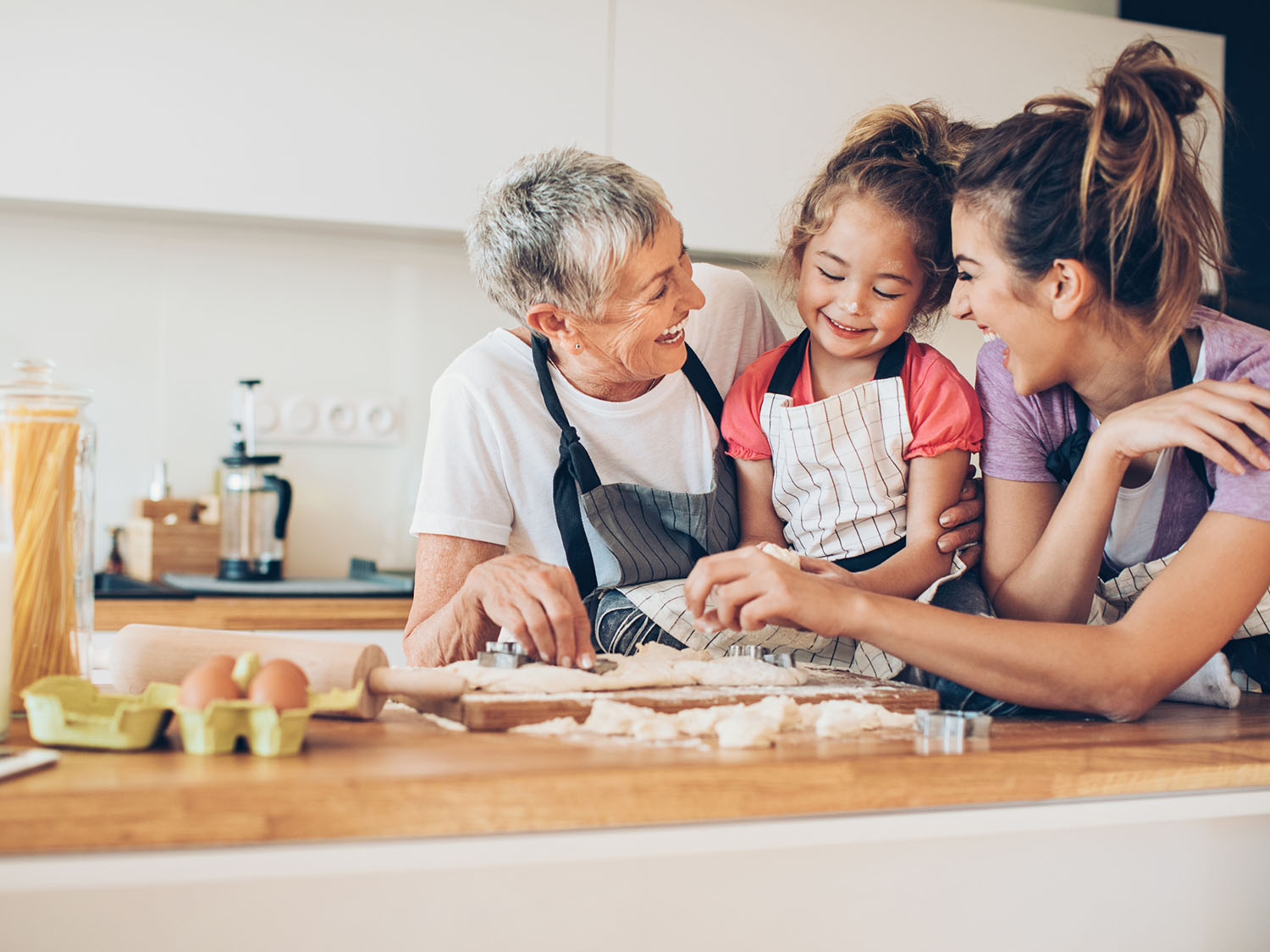My children love to help in the kitchen. And while it’s not something I have the time (or patience!) for every day, I recognize the learning value of cooking together. From toddlers to teenagers, cooking offers a practical, hands-on way for kids to:
- Practice an important life skill.
- Develop mathematical understanding (measuring ingredients, setting oven temperature, etc.).
- Further their scientific knowledge (observing change).
- Apply their reading, writing, speaking, and listening skills.
Encouraging literacy skill development as you cook together is easy when you allow it to flow naturally from what you're doing. So, rustle up your favorite kid-friendly recipes (our Kids Cooking activity book has 30 great suggestions!) and give these simple ideas a try.
1. Make a shopping list together
Before you begin, name the items you'll need with your child. Independent writers can jot down a list for you and you can entice pre-readers with a paper and a pen, just like the ones you are using. Sit beside your little one as you write your shopping list, saying aloud what you are writing as you add each item to the list. Your child will be sure to imitate you and will learn an important purpose of writing in the process. Younger kids also enjoy ticking off the items from the list once you’re at the store.
2. Read the recipe together
Recipes provide a wonderful introduction to instructional texts. Older children can read the ingredient list, gather the necessary ingredients, and read the recipe instructions aloud, step-by-step, as you go. Keep it simple for little ones. For example, “A recipe tells us what we need to make our cupcakes, and how to make them. It says we need flour, here’s the flour…”
3. Taste ingredients
Sometimes when cooking together, I’ll ask my daughters if they're brave enough for a blind taste test. To play, simply ask your child to cover her eyes and open her mouth. Then, offer a small taste of one of the ingredients you're cooking with and invite her to guess which it is. It’s a great way to get your kids talking about different categories of foods (spices, fruit, dairy product, etc.), as well as textures (smooth, lumpy, crunchy, etc.) and flavors (sweet, spicy, sour, salty, etc.) and it provides a physical connection between the senses and the descriptive words used.
4. Grow vocabulary
There are so many interesting words to learn when cooking! Names of ingredients — cinnamon or saffron — as well as processes, such as whisking and dicing, measurements and temperatures. Hearing and seeing these words used within a real-life application, equips your child to better understand and remember the words and their meanings.
5. Encourage younger children to notice environmental print
Environmental print is all around us. It’s the name given to print that appears on signs, labels and logos. Encouraging preschoolers and beginning readers to notice environmental print helps them to learn that reading involves not just letters and sounds but pictures and context too. Asking your three-year-old to find the cornflakes from among the cereal boxes in your pantry, or your six-year-old to find the all-purpose flour that sits next to the self-raising flour on the shelf, is inviting them to take notice of environmental print.
6. Read a story
While the jelly sets or your cake bakes, why not sit together and enjoy a story related to food or the dish you are cooking?
MORE: Bake Giant Pretzel 'Bones' Inspired by Clifford the Big Red Dog
Inviting your child to spend time cooking with you is a delicious way to encourage literacy learning through all of the sounds, sights, and tastes in the kitchen. Hopefully, the end-product of your cooking time will be delicious too!
Featured Photo Credit: © kupicoo /iStockphoto

